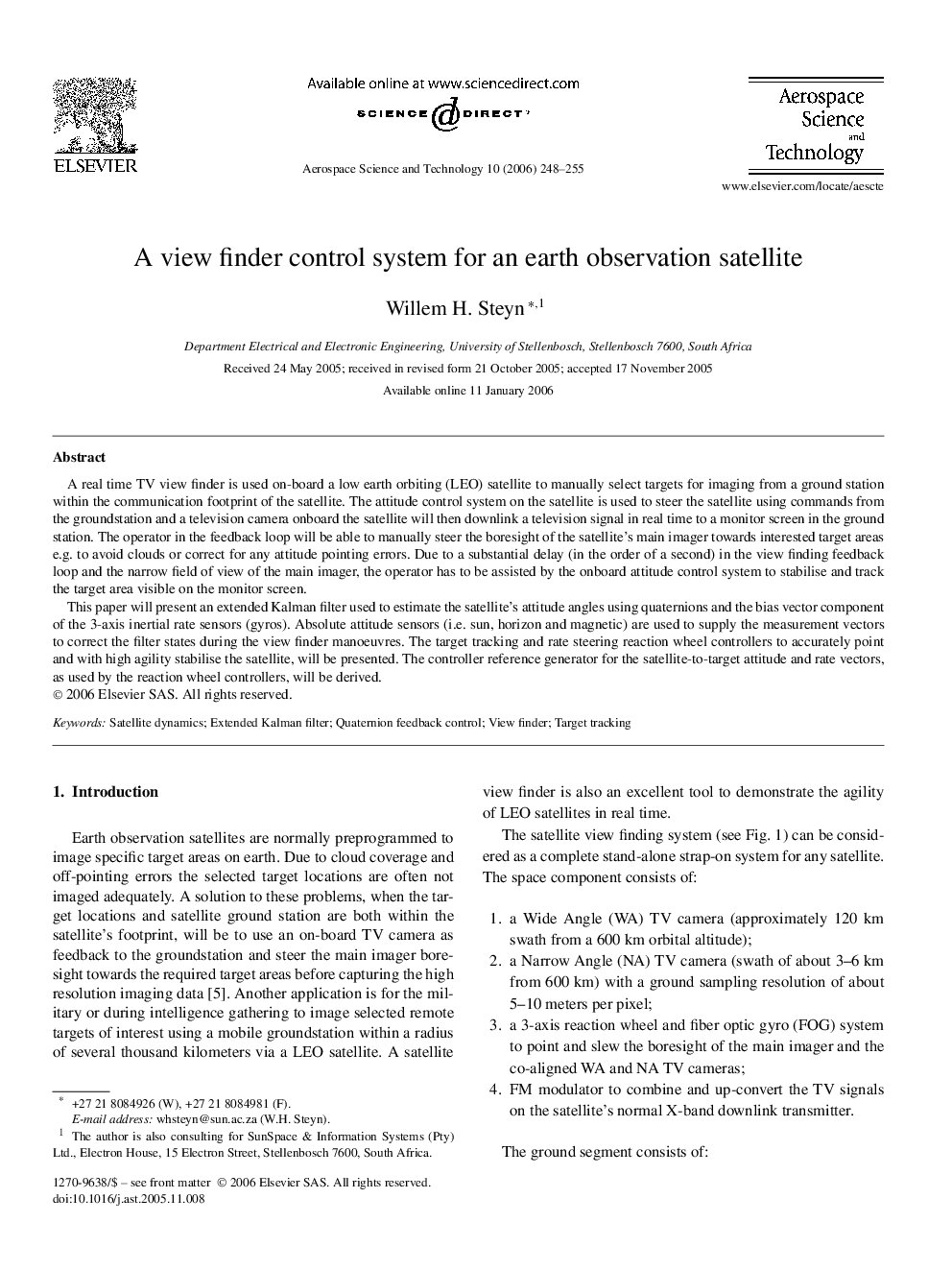| کد مقاله | کد نشریه | سال انتشار | مقاله انگلیسی | نسخه تمام متن |
|---|---|---|---|---|
| 1719079 | 1013890 | 2006 | 8 صفحه PDF | دانلود رایگان |

A real time TV view finder is used on-board a low earth orbiting (LEO) satellite to manually select targets for imaging from a ground station within the communication footprint of the satellite. The attitude control system on the satellite is used to steer the satellite using commands from the groundstation and a television camera onboard the satellite will then downlink a television signal in real time to a monitor screen in the ground station. The operator in the feedback loop will be able to manually steer the boresight of the satellite's main imager towards interested target areas e.g. to avoid clouds or correct for any attitude pointing errors. Due to a substantial delay (in the order of a second) in the view finding feedback loop and the narrow field of view of the main imager, the operator has to be assisted by the onboard attitude control system to stabilise and track the target area visible on the monitor screen.This paper will present an extended Kalman filter used to estimate the satellite's attitude angles using quaternions and the bias vector component of the 3-axis inertial rate sensors (gyros). Absolute attitude sensors (i.e. sun, horizon and magnetic) are used to supply the measurement vectors to correct the filter states during the view finder manoeuvres. The target tracking and rate steering reaction wheel controllers to accurately point and with high agility stabilise the satellite, will be presented. The controller reference generator for the satellite-to-target attitude and rate vectors, as used by the reaction wheel controllers, will be derived.
Journal: Aerospace Science and Technology - Volume 10, Issue 3, April 2006, Pages 248-255